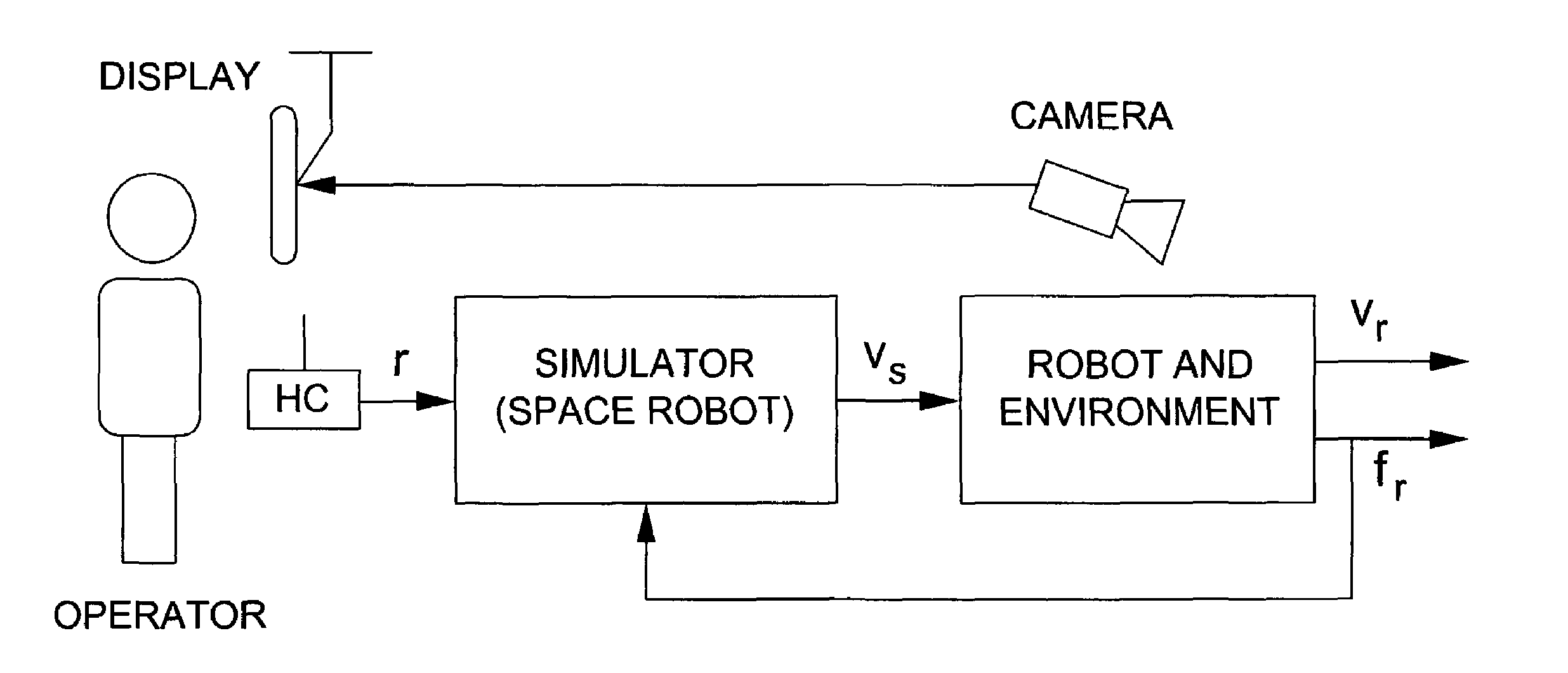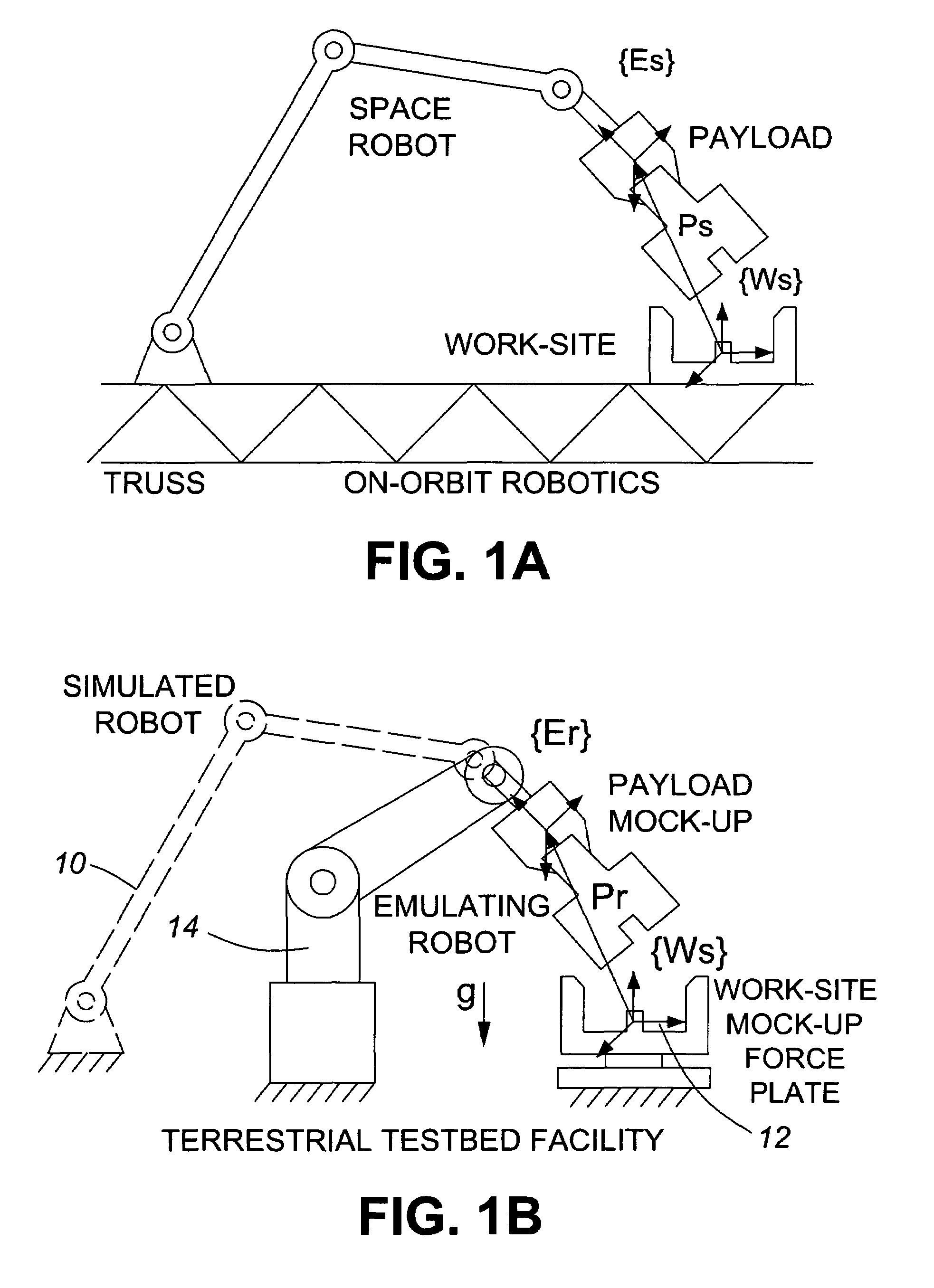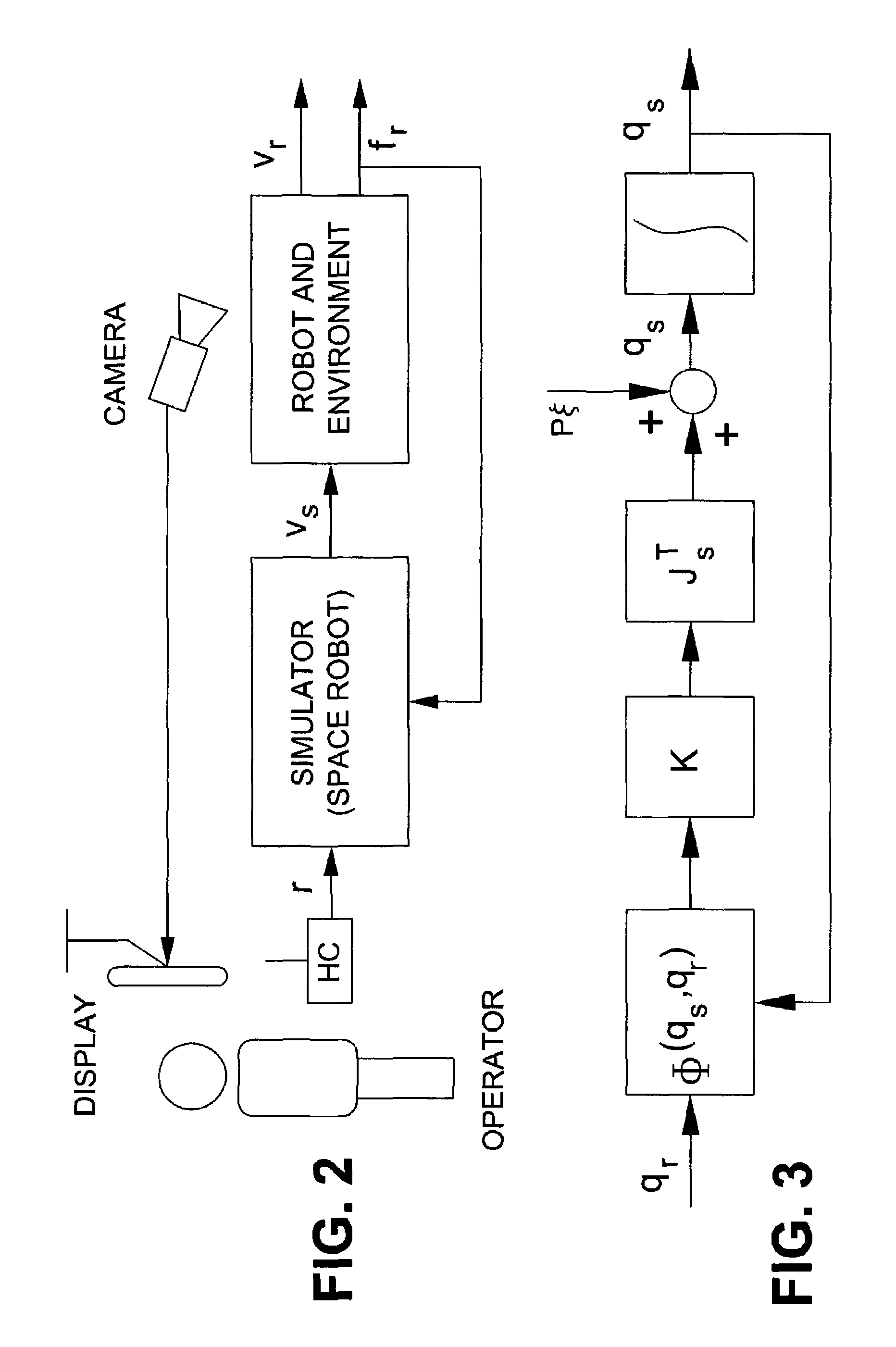Robust impedance-matching of manipulators interacting with unknown environments
a technology of impedance matching and unknown environment, applied in the field of robots, can solve the problems of difficult to replicate the dynamical effects induced, cannot even support itself against gravity, so as to minimize the disturbance sensitivity of the emulating system and more sensitivity
- Summary
- Abstract
- Description
- Claims
- Application Information
AI Technical Summary
Benefits of technology
Problems solved by technology
Method used
Image
Examples
example 1
[0179] Let's assume the matrix of environment impedance be diagonal, i.e., {tilde over (Δ)}z=diag{δi}. Then uncertainty is
Δ1:={diag{δ1I2×2, . . . , δnI2×2,Δp}:δ1, . . . , δn∈C,Δp∈Cn×2n},
which specifies the scaling matrix D as
D:={diag(D1, . . . , Dn,In×n):D1, . . . , Dn∈C2×2}.
For the SISO case D={diag(D1, d2I),D1∈C2×2,d2∈C}. The μ-synthesis problem with the above structure can be solved by using the Matlab μ-Synthesis Toolbox.
[0180]Example 2: Let's assume that the environment impedance has no particular structure. Then, the uncertainty should have the following structure
[0181]Δ2:={diag{Δ~z,Δ~z,Δp}:Δ~z∈Cn×n,Δp∈Cn×2n}.ThenD2:={diag{[d11In×nd12In×nd21In×nd22In×n],In×n}:d11,d12,d22∈C,d21=d12*}.
[0182]The Matlab μ-Synthesis μ-synthesis cannot handle the above problem. However, the minimization problem (44) can be transformed into the following LMI (Linear Matrix Inequality) problem
M*XM−Xβ<0,
where X=D*D>0, which can be solved by Matlab LMI Toolbox.
Experimental Validation
[0183...
PUM
 Login to View More
Login to View More Abstract
Description
Claims
Application Information
 Login to View More
Login to View More - R&D
- Intellectual Property
- Life Sciences
- Materials
- Tech Scout
- Unparalleled Data Quality
- Higher Quality Content
- 60% Fewer Hallucinations
Browse by: Latest US Patents, China's latest patents, Technical Efficacy Thesaurus, Application Domain, Technology Topic, Popular Technical Reports.
© 2025 PatSnap. All rights reserved.Legal|Privacy policy|Modern Slavery Act Transparency Statement|Sitemap|About US| Contact US: help@patsnap.com



